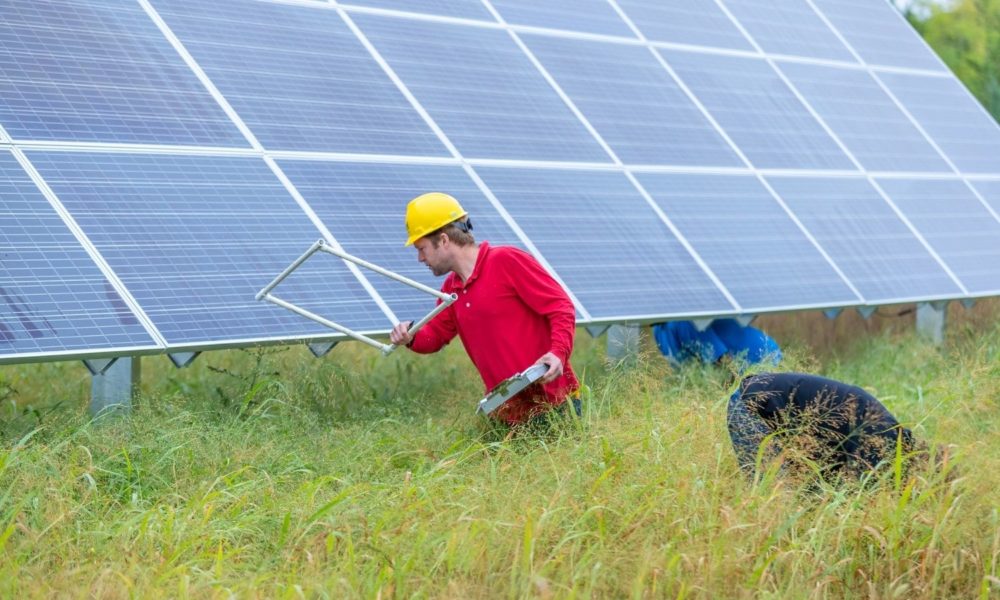On the last day of the 2022 Minnesota legislative session, state legislators had a real case of the Mondays: They failed to deliver on climate and energy policies that would have accelerated renewable energy enough to forge a clear path to carbon-free electricity and set the state on track to meet science-based emission reduction targets. In fact, they failed to act on any major spending bills. Even with a $9+ billion surplus on their hands, critical investments in energy efficiency, just transition for communities, solar, energy storage, and more were barred by larger disagreements over how much to spend on what.
The kicker is that conference committee members had managed to come to an agreement on a $40-million climate and energy omnibus that fell reasonably in between the House’s $120-million “go big” proposal and the Senate’s $12-million “go small” version. The compromise included critical investments in solar, weatherization assistance, community energy transition grants, and leveraged funds from the federal infrastructure law.
The best hope now for Minnesota legislators to act on the climate and energy agreement is a special session. With only eight years left to attain 80 percent of emission reductions in the electricity sector by 2030 and lay the foundation to meet economy-wide climate goals, they need to get back to work to finish the job before 2023.
Time is Running Out to Secure Federal Infrastructure Funding
Last winter, Congress passed the $1.2-trillion Infrastructure Investment and Jobs Act, which included investments in electricity grid upgrades, climate resilience, public transit, energy storage, electric vehicle infrastructure, energy efficiency, and more. Of that, more than $7 billion could come to Minnesota—but the vast majority requires state matching funds that lawmakers have not yet passed.
Unless legislators return to St. Paul in a special session to pass the climate and energy funding they agreed on, Minnesota will miss out on significant federal support for clean energy infrastructure as federal programs start and other states vie for funding.
Carbon-Free Electricity Is Within Reach
Reaching 100-percent carbon-free electricity in Minnesota in the next decade is entirely possible. For example, a recent analysis by the Union of Concerned Scientists and its partner organizations, including COPAL, found that Minnesota could meet 100 percent of its electricity needs with renewable energy by 2035, even with strong increases in demand from electrifying transportation and heating.
We’ve seen some significant progress on the policies needed to get there, thanks to leadership in the House, which passed 100-percent carbon-free electricity standards in 2019 and 2021, as well as sizeable investments in equitable clean energy in 2022. In addition, Minnesota has made progress outside the Capitol as well: the Minnesota Public Utilities Commission approved a long-term energy plan for Minnesota’s largest utility, Xcel Energy, that included strong renewable energy buildouts, equity commitments, and no new gas-fired electricity.
Minnesota has the tools to build a clean energy future. But it needs more action from state leaders.
Renewables Provide Health and Economic Benefits
Not only is matching Minnesota’s electricity consumption with 100-percent renewable electricity feasible, but it also would provide health and economic benefits by improving air quality and creating new clean energy jobs.
Our analysis of the benefits of Minnesota and 24 other leadership states would reap by meeting 100-percent renewable electricity standards, significant reduction in air pollution due to reduced reliance on fossil fuel power plant would enable Minnesotans to see the following public health gains by 2040:
- 80 to 180 fewer premature deaths,
- 2,260 fewer asthma cases,
- 10,600 fewer lost workdays, and
- realize more than $1.2 billion in public health cost savings overall.
By 2040, Minnesota would also gain more than 40,000 new jobs constructing and installing new wind and solar infrastructure, resulting in $4.9 billion in net labor income from wages and salaries, benefits, payroll taxes, and income earned by local business owners.
Finally, meeting electricity demand with 100-percent renewable energy by 2035 would secure an 87 percent drop in heat-trapping emissions between 2020 and 2040. This would help Minnesota get back on track to meet science-based emission reduction targets.
What Are We Waiting For?
Delaying action on the energy and jobs omnibus bill prevents Minnesotans from reaping the benefits of renewable energy. Minnesota has the money to fund clean energy investments—a budget surplus of more than $9 billion. Individual legislators also have already put in the work brokering agreements on energy legislation. What the state needs is more time to pass these bills, and Minnesota leaders can provide it by calling a special session immediately and prioritizing climate action and renewable energy.
Senate Majority Leader Jeremy Miller, House Speaker Melissa Hortman and Gov. Tim Walz should agree to a special session that includes passing matching funds for the infrastructure law and funding for energy efficiency, solar, and just transition for communities. Minnesotans cannot afford to lose another year of inaction during an ever-worsening climate crisis.

